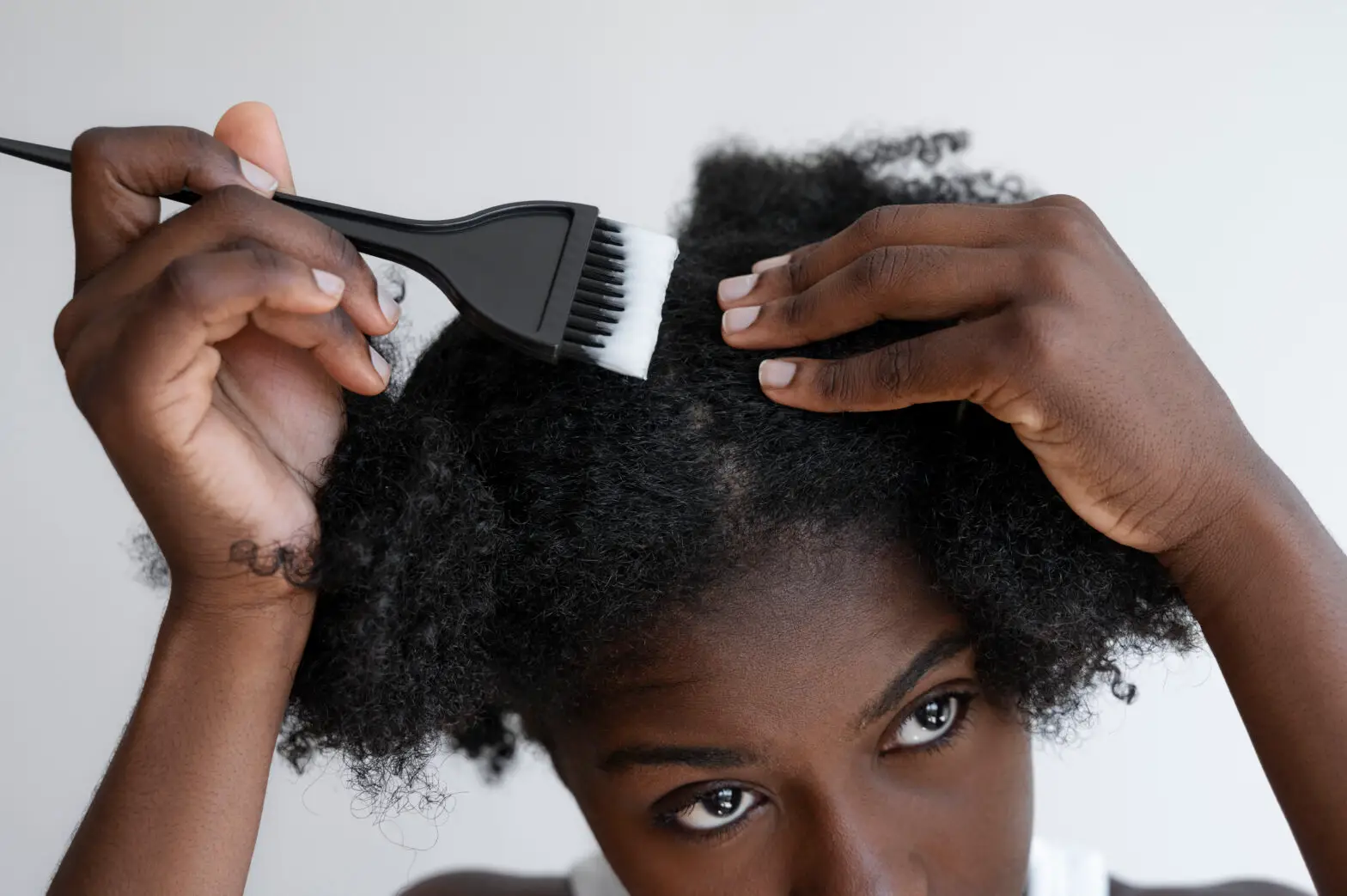Maintaining a relaxed hair needs a delicate balance of moisture, strength, and protection to ensure its health and vibrancy. With our black hair’s unique texture and curl pattern, it becomes even more vulnerable when we add chemical treatments such as relaxers, texturizers, or color(dye). These processes change the hair’s natural structure, often leading to dryness, breakage, and damage if not properly cared for. However, with the right practices, you can keep your chemically treated hair healthy and beautiful. Here’s how, in an easy-to-understand format with practical examples: 1. Moisturizing is Key Why It’s Important: Chemical treatments can strip hair of its natural oils, leading to dryness. Dry hair is more prone to breakage. What to Do: Implement a rigorous moisturizing routine. Use leave-in conditioners and deep conditioning treatments regularly. For example, after shampooing, apply a deep conditioner and cover your hair with a plastic cap. Sit under a hooded dryer or use a warm towel around your head for 30 minutes to allow the conditioner to penetrate deeply. 2. Protein Treatments Why It’s Important: Chemical processes break down the protein structure of your hair, making it weak. Protein treatments help rebuild its strength. What to Do: Incorporate a protein treatment into your hair care routine every 4-6 weeks. Use products specifically designed for chemically treated hair. A practical approach is to apply a protein treatment that contains keratin or collagen, leave it on your hair as directed (usually between 10-30 minutes), then rinse it out. This will help reinforce the hair’s structure and reduce breakage. 3. Low-Manipulation Styling: Why It’s Important: Chemically processed hair is more susceptible to damage from heat and manipulation. Excessive styling can lead to breakage and split ends. What to Do: Opt for low-manipulation hairstyles that don’t require frequent combing, brushing, or heat styling. Examples include twists, braids, or updos that can last several days to a week. When detangling, use a wide-tooth comb and start from the ends, working your way up to the roots gently. 4. Limit Heat Usage: Why It’s Important: Heat styling can cause further damage to already processed hair, making it brittle and dry. What to Do: Reduce the use of heat styling tools like flat irons, curling irons, and blow dryers. If you must use them, always apply a heat protectant beforehand. Alternatively, embrace heatless styling methods, such as roller sets or braid-outs, to achieve desired styles without the damage. 5. Protective Night-time Practices: Why It’s Important: Cotton pillowcases can absorb your hair’s oils and cause friction, leading to breakage. What to Do: Sleep with a satin or silk scarf wrapped around your head, or use a satin pillowcase. This will help retain moisture and reduce breakage caused by friction. Additionally, try to braid or twist your hair loosely before bed to prevent tangles and breakage. 6. Regular Trims: Why It’s Important: Split ends can travel up the hair shaft and cause more damage, making your hair look frizzy and unkempt. What to Do: Get your hair trimmed regularly, about every 6-8 weeks, to keep it looking healthy and to prevent split ends from causing further damage. 7. Hydrate and Nourish From Within: Why It’s Important: Healthy hair starts from the inside. A well-balanced diet and adequate hydration are essential for maintaining the health of your hair. What to Do: Drink plenty of water and eat a balanced diet rich in vitamins, minerals, and omega-3 fatty acids. Foods like salmon, avocados, nuts, and leafy greens can promote healthier hair. By adopting these best practices, you’ll not only protect your chemically processed African hair from potential damage but also encourage its growth and vitality. Remember, consistency is key, and your hair’s needs may change over time, so be attentive and willing to adjust your routine as necessary. “Your hair is your crown, your hairitage, so be bold, be confident, be #BONFIDENT”

